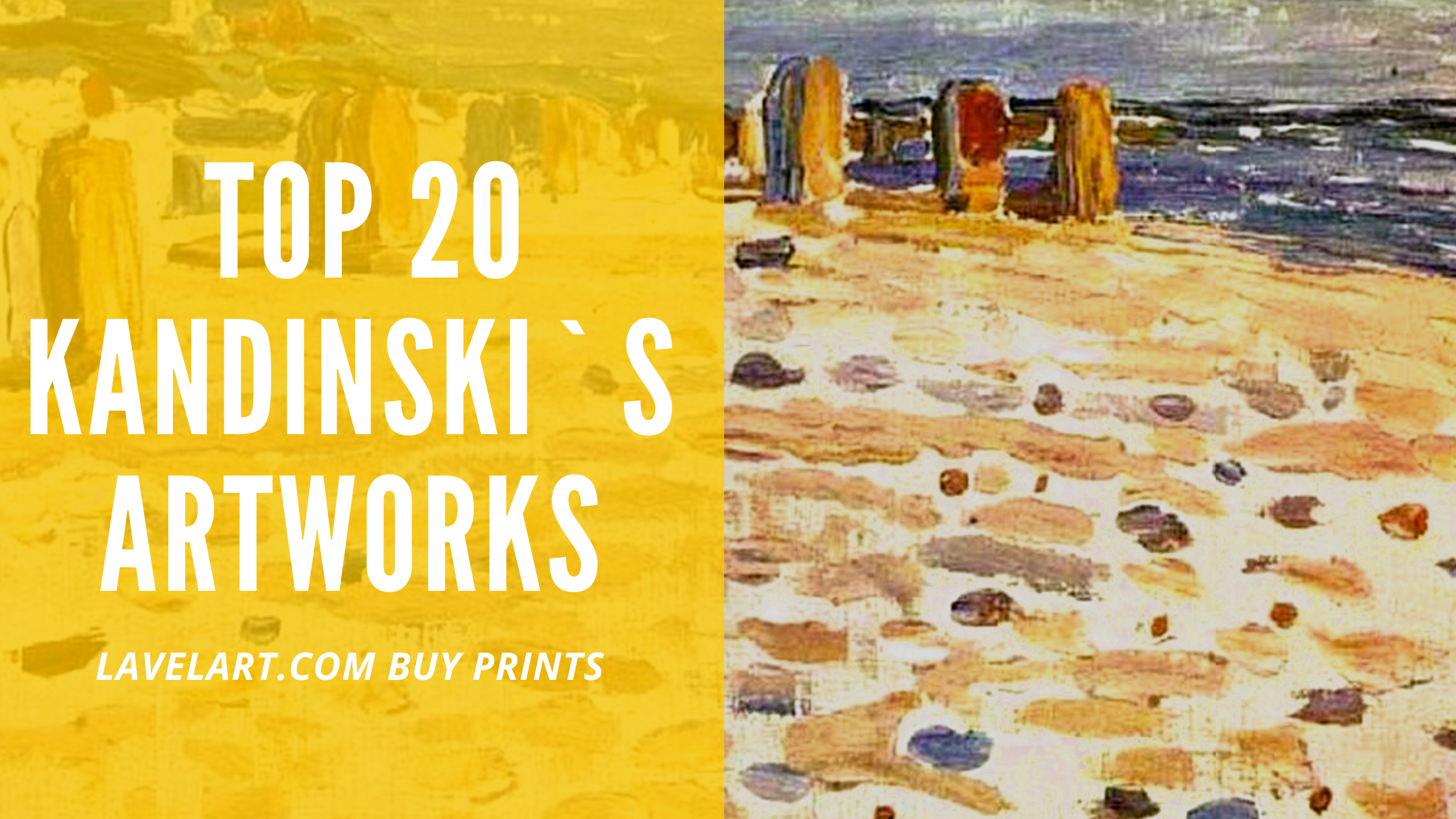
Top 20 Amazing Kandinsky Prints That Will Amaze Your Home
I created this Wassily Kandinsky Prints compilation for you, and i hope you will enjoy it. Also you will find the story about this talented artist and about his artworks. These Kandinsky posters will look perfectly in any house or apartment. So you should choose Kandinsky poster that will suit you personally and will please your soul and your eyes. Not all Wassily Kandinsky famous works are in my list, because he was very hard working artist and created so many masterpieces .
Wassily Kandinsky was a Russian artist and art theorist who influenced the development of modern fine art greatly.
Wassily Kandinsky prints on canvas
He was the one who liberated painting from the constraints of representation, laying the groundwork for the development of abstraction. His immense impact on the art world has forever altered the way people think about painting. The artist’s work was founded on philosophical viewpoints that evolved into graphical depictions throughout time.
Kandinsky is perhaps first and foremost a thinker, followed by an artist. He only saw a saturated configuration moving in one direction and chased him aggressively, establishing an example for future avant-garde innovators. The pursuit for a universal synthesis of music and painting, seen as parallels to philosophy and science, lies at the heart of Kandinsky’s abstraction.
In 1866, Wassily Kandinsky was born in Moscow. He was fascinated by the range of hues in nature since he was a child, and he was always interested in painting. Despite his academic achievements in economics and law, he forewent a lucrative career in the social sciences in order to pursue a creative profession.
The young artist’s visit to a Claude Monet show provided a decisive motivation for him to commit himself to the study of fine painting. Kandinsky was 30 years old when he enrolled in Munich’s art school. He maintained his independent studies despite not being admitted the first time.
Wassily Vasilyevich attended an art school for two years before going on the road. The artist traveled to the Netherlands, France, Italy, and Tunisia, among other places. He painted under the influence of post-impressionism at the time, recreating his boyhood in Russia in imaginative landscapes with idealistic importance for the artist. He settled in Murnau, near Munich, and continued to experiment with landscapes, adding aggressive lines and harsh, hard colors to them.
Kandinsky pondered music, attempting to capture its abstract qualities in different mediums. In Munich, in 1911, a group of like-minded artists led by Kandinsky developed. “The Blue Rider” – “Der Blaue Reiter” – was their moniker. August Macke and Franz Marc, two well-known German expressionists, were among the participants. The organization released an almanac with its own take on modern art and held two exhibitions before disbanding in 1914 with the outbreak of World War I.
The shift to the use of fundamental visual elements signaled the start of a pivotal stage in Kandinsky’s career and served as a forerunner to the emergence of abstract art. He coined the term “lyrical abstraction” to describe his new technique. The artist replicated the flow and depth of a musical work through drawing and sketching, and the coloring reflected the concept of deep concentration. In 1912, he composed and published “On the Spiritual in Art,” a major work.
Kandinsky was forced to return to Russia in 1914, but he continued to experiment. After the revolution, he even assisted in the reform of Russian art institutions. But it wasn’t until 1923, when he returned to Germany and joined the Bauhaus teaching corps, where he met another inventive avant-garde artist, Paul Klee, that the true significance of his remarkable innovation became evident.
Kandinsky devised a new pictorial formula that included lines, dots, and mixed geometric shapes to convey his visual and intellectual studies. The focus of lyrical abstraction has switched to a more systematic, scientific approach.
After ten years of productive labor, the Bauhaus school was closed by Nazi authorities in 1933. Kandinsky was compelled to go to France, where he remained for the rest of his life.
The Russian genius has been working on a tremendous synthesis of his abstract thoughts and visual discoveries for the past eleven years. He reverted to vivid color and lyricism, reinforcing his previous beliefs about the actual essence of painting. The brilliant artist became a French citizen and produced a number of well-known works of art in his new country. At the age of 77, he died in Neuilly in 1944.
Wassily Kandinsky’s work, as well as that of his contemporaries Marc Chagall, Paul Klee, Franz Marc, and Piet Mondrian, was declared “degenerate art” by the new Nazi authorities in 1937, and more than a thousand paintings and thousands of sketches were publicly burned in the atrium of a Berlin fire station two years later. Nonetheless, the famous works of art by Wassily Kandinsky’s persuasive power did not diminish under the weight of history, and they triumphed on the stage of art history.
You will find many awesome Kandinsky Prints on canvas on our website.
1. “Sequence,” 1935
This is practically a piece of music from Kandinsky’s late phase of creativity. Closed fields with scattered composition parts flowing into certain shapes. The artist went back to his roots in abstract art.
2. 1903’s “The Blue Rider”
Der Blaue Reiter, one of the most prominent groups in the history of contemporary art, was founded as a result of this picture. On the threshold of abstraction, this early composition is written.

3. “Holland’s Beach Baskets,” 1904.
A scene inspired by a vacation to the Netherlands. Impressionism is said to have impacted the setting.
4. “Autumn in Murnau”, 1908
Expressionism in the landscape illustrates the gradual transition to abstraction.
5. “Akhtyrka. The Red Church”, 1908
A Russian landscape in which the artist resurrected his homesickness.
6. “The Mountain”, 1909
Almost completely abstract landscape with small contours suggesting a hill and human figures.
7. “The first abstract watercolor”, 1910
This work has historical value as the first completely abstract watercolor by Kandinsky.
8. “Improvisation 10”, 1910
Improvisation in drawing and color gives hints, but does not fully reveal or concretize the images. Early abstraction.
9. “Lyric”, 1911
Because the artist frequently used musical motifs in his paintings, the lyrical character of his strokes came easily. One of his “artistic poetry” is this.
10. “Composition IV”, 1911
According to legend, Kandinsky thought he had finished the painting, but when his assistant accidentally turned it the other way, the perspective and overall impression of the canvas changed, making it beautiful.
11. “Improvisation 26 (Rowing)”, 1912
Kandinsky frequently referred to his paintings in the style of musical works as improvisations and compositions.
12. “Improvisation 31 (Sea battle)”, 1913
A classic example of lyrical abstraction, with vibrant color and emotional content.
13. “Squares with concentric circles”, 1913
Really a deep abstraction. Kandinsky conducted research in the fields of color and geometry as a result of this.
14. “Composition VI”, 1913
Kandinsky completed this painting in three days after extensive preparation, using the German word “uberflut,” which means flood, as a mantra for inspiration.
15. “Moscow”, 1916
Kandinsky was struck by the chaos of the big city during his stay in Moscow during the war years. This is a portrait of the capital rather than a landscape that reflects all of its power and turbulence.
16. “Blue”, 1922
Another color study in a very limited geometric form.
17. “Black and Purple”, 1923
One of the paintings completed after his return to Germany. The composition still has rich colors, but a distinctly sharp geometric turn pushes lyrical strokes away.
18. “On white II”, 1923
The visual representation is based on two primary tones: black and white. The two polar opposites create a strong contrast, maintaining the tension in the painting, which represents the struggle between life and death.
19. “Yellow, red, blue”, 1925
This is mainly a study of the potential of the bright colors that adorn a geometric composition, as the title implies.
20. “Composition X”, 1939
This artwork was also created with the help of music. The visual elements of an ideal symphony are proportional to the musical components. Kandinsky considered this to be the secret of true painting.
Kandinsky Prints kandinsky prints compilation for you, and i hope you will enjoy it. Also you will find the story about this talented artist and about his artworks. These Kandinsky posters will look perfectly in any house or apartment. So you should choose Kandinsky poster that will suit you personally and will please your soul and your eyes.
Wassily Kandinsky was a Russian artist and art theorist who influenced the development of modern fine art greatly.
Wassily Kandinsky prints on canvas
He was the one who liberated painting from the constraints of representation, laying the groundwork for the development of abstraction. His immense impact on the art world has forever altered the way people think about painting. The artist’s work was founded on philosophical viewpoints that evolved into graphical depictions throughout time.
Kandinsky is perhaps first and foremost a thinker, followed by an artist. He only saw a saturated configuration moving in one direction and chased him aggressively, establishing an example for future avant-garde innovators. The pursuit for a universal synthesis of music and painting, seen as parallels to philosophy and science, lies at the heart of Kandinsky’s abstraction.
In 1866, Wassily Kandinsky was born in Moscow. He was fascinated by the range of hues in nature since he was a child, and he was always interested in painting. Despite his academic achievements in economics and law, he forewent a lucrative career in the social sciences in order to pursue a creative profession.
The young artist’s visit to a Claude Monet show provided a decisive motivation for him to commit himself to the study of fine painting. Kandinsky was 30 years old when he enrolled in Munich’s art school. He maintained his independent studies despite not being admitted the first time.
Wassily Vasilyevich attended an art school for two years before going on the road. The artist traveled to the Netherlands, France, Italy, and Tunisia, among other places. He painted under the influence of post-impressionism at the time, recreating his boyhood in Russia in imaginative landscapes with idealistic importance for the artist. He settled in Murnau, near Munich, and continued to experiment with landscapes, adding aggressive lines and harsh, hard colors to them.
Kandinsky pondered music, attempting to capture its abstract qualities in different mediums. In Munich, in 1911, a group of like-minded artists led by Kandinsky developed. “The Blue Rider” – “Der Blaue Reiter” – was their moniker. August Macke and Franz Marc, two well-known German expressionists, were among the participants. The organization released an almanac with its own take on modern art and held two exhibitions before disbanding in 1914 with the outbreak of World War I.
The shift to the use of fundamental visual elements signaled the start of a pivotal stage in Kandinsky’s career and served as a forerunner to the emergence of abstract art. He coined the term “lyrical abstraction” to describe his new technique. The artist replicated the flow and depth of a musical work through drawing and sketching, and the coloring reflected the concept of deep concentration. In 1912, he composed and published “On the Spiritual in Art,” a major work.
Kandinsky was forced to return to Russia in 1914, but he continued to experiment. After the revolution, he even assisted in the reform of Russian art institutions. But it wasn’t until 1923, when he returned to Germany and joined the Bauhaus teaching corps, where he met another inventive avant-garde artist, Paul Klee, that the true significance of his remarkable innovation became evident.
Kandinsky devised a new pictorial formula that included lines, dots, and mixed geometric shapes to convey his visual and intellectual studies. The focus of lyrical abstraction has switched to a more systematic, scientific approach.
After ten years of productive labor, the Bauhaus school was closed by Nazi authorities in 1933. Kandinsky was compelled to go to France, where he remained for the rest of his life.
The Russian genius has been working on a tremendous synthesis of his abstract thoughts and visual discoveries for the past eleven years. He reverted to vivid color and lyricism, reinforcing his previous beliefs about the actual essence of painting. The brilliant artist became a French citizen and produced a number of well-known works of art in his new country. At the age of 77, he died in Neuilly in 1944.
Wassily Kandinsky’s work, as well as that of his contemporaries Marc Chagall, Paul Klee, Franz Marc, and Piet Mondrian, was declared “degenerate art” by the new Nazi authorities in 1937, and more than a thousand paintings and thousands of sketches were publicly burned in the atrium of a Berlin fire station two years later. Nonetheless, the famous works of art by Wassily Kandinsky’s persuasive power did not diminish under the weight of history, and they triumphed on the stage of art history.
You will find many awesome Kandinsky Prints on canvas on our website.
1. “Sequence,” 1935
This is practically a piece of music from Kandinsky’s late phase of creativity. Closed fields with scattered composition parts flowing into certain shapes. The artist went back to his roots in abstract art.
2. 1903’s “The Blue Rider”
Der Blaue Reiter, one of the most prominent groups in the history of contemporary art, was founded as a result of this picture. On the threshold of abstraction, this early composition is written.

3. “Holland’s Beach Baskets,” 1904.
A scene inspired by a vacation to the Netherlands. Impressionism is said to have impacted the setting.
4. “Autumn in Murnau”, 1908
Expressionism in the landscape illustrates the gradual transition to abstraction.
5. “Akhtyrka. The Red Church”, 1908
A Russian landscape in which the artist resurrected his homesickness.
6. “The Mountain”, 1909
Almost completely abstract landscape with small contours suggesting a hill and human figures.
7. “The first abstract watercolor”, 1910
This work has historical value as the first completely abstract watercolor by Kandinsky.
8. “Improvisation 10”, 1910
Improvisation in drawing and color gives hints, but does not fully reveal or concretize the images. Early abstraction.
9. “Lyric”, 1911
Because the artist frequently used musical motifs in his paintings, the lyrical character of his strokes came easily. One of his “artistic poetry” is this.
10. “Composition IV”, 1911
According to legend, Kandinsky thought he had finished the painting, but when his assistant accidentally turned it the other way, the perspective and overall impression of the canvas changed, making it beautiful.
11. “Improvisation 26 (Rowing)”, 1912
Kandinsky frequently referred to his paintings in the style of musical works as improvisations and compositions.
12. “Improvisation 31 (Sea battle)”, 1913
A classic example of lyrical abstraction, with vibrant color and emotional content.
13. “Squares with concentric circles”, 1913
Really a deep abstraction. Kandinsky conducted research in the fields of color and geometry as a result of this.
14. “Composition VI”, 1913
Kandinsky completed this painting in three days after extensive preparation, using the German word “uberflut,” which means flood, as a mantra for inspiration.
15. “Moscow”, 1916
Kandinsky was struck by the chaos of the big city during his stay in Moscow during the war years. This is a portrait of the capital rather than a landscape that reflects all of its power and turbulence.
16. “Blue”, 1922
Another color study in a very limited geometric form.
17. “Black and Purple”, 1923
One of the paintings completed after his return to Germany. The composition still has rich colors, but a distinctly sharp geometric turn pushes lyrical strokes away.
18. “On white II”, 1923
The visual representation is based on two primary tones: black and white. The two polar opposites create a strong contrast, maintaining the tension in the painting, which represents the struggle between life and death.
19. “Yellow, red, blue”, 1925
This is mainly a study of the potential of the bright colors that adorn a geometric composition, as the title implies.
20. “Composition X”, 1939
This artwork was also created with the help of music. The visual elements of an ideal symphony are proportional to the musical components. Kandinsky considered this to be the secret of true painting.










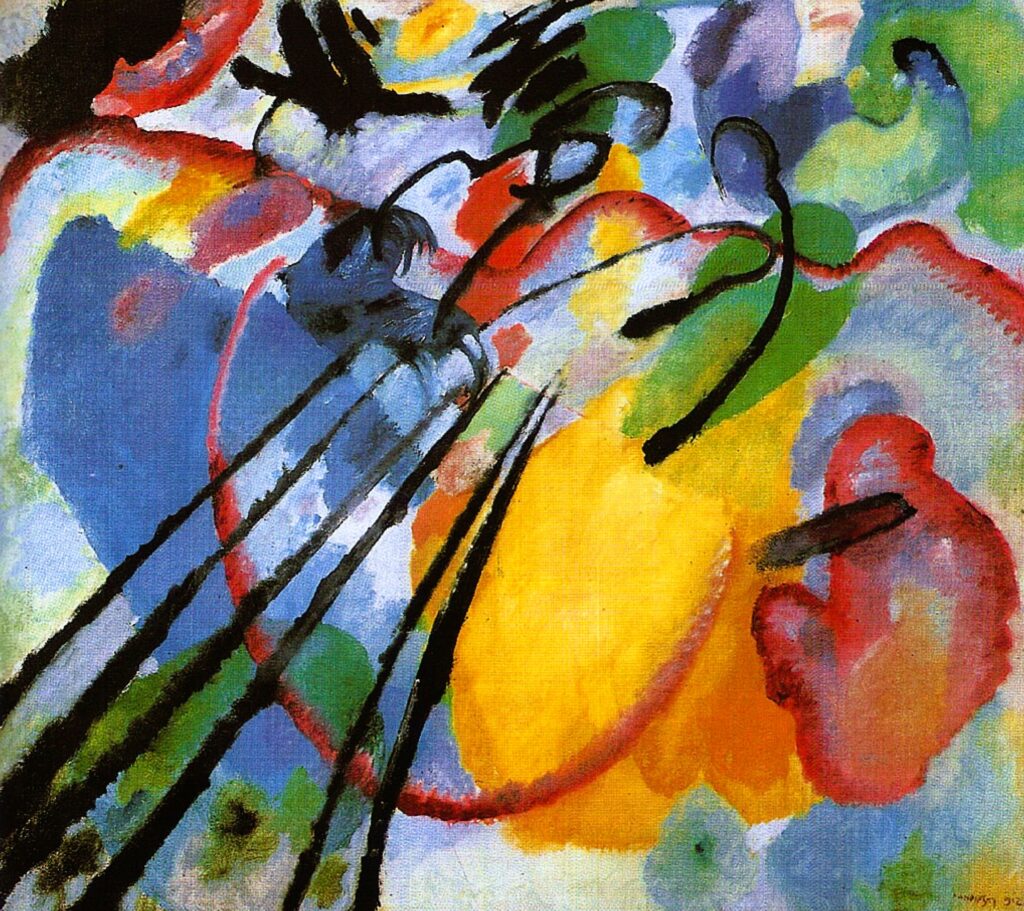
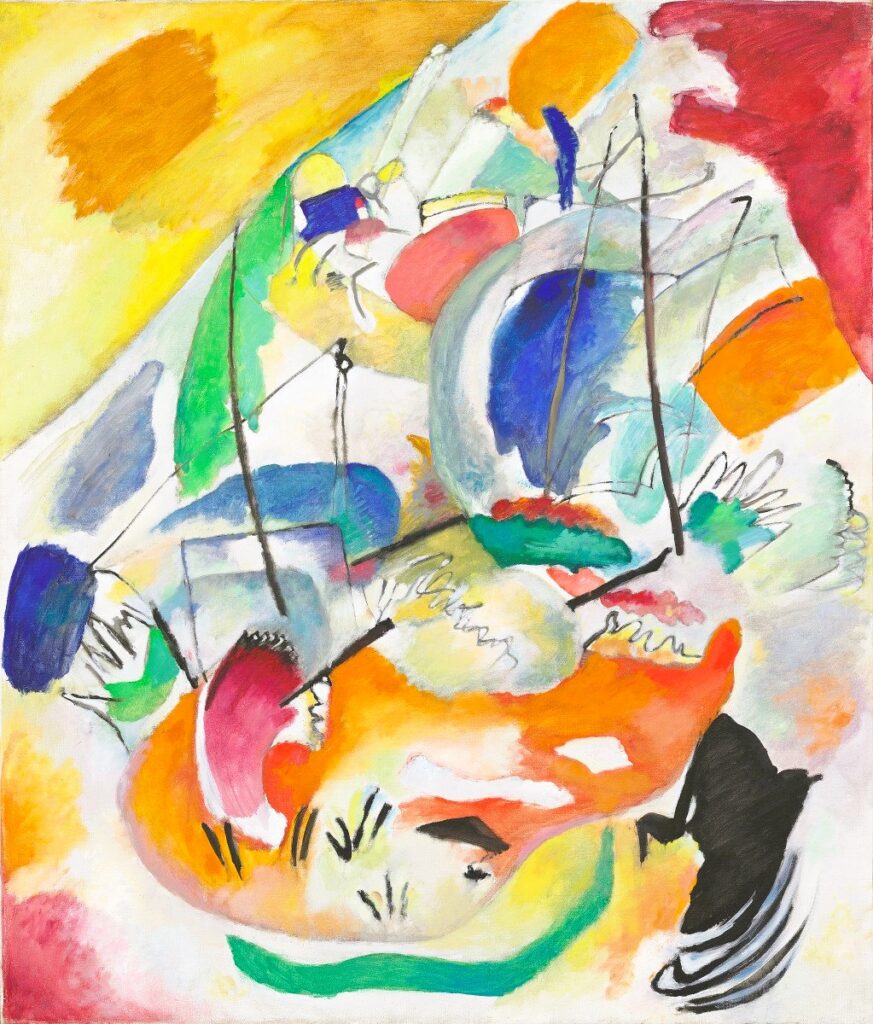

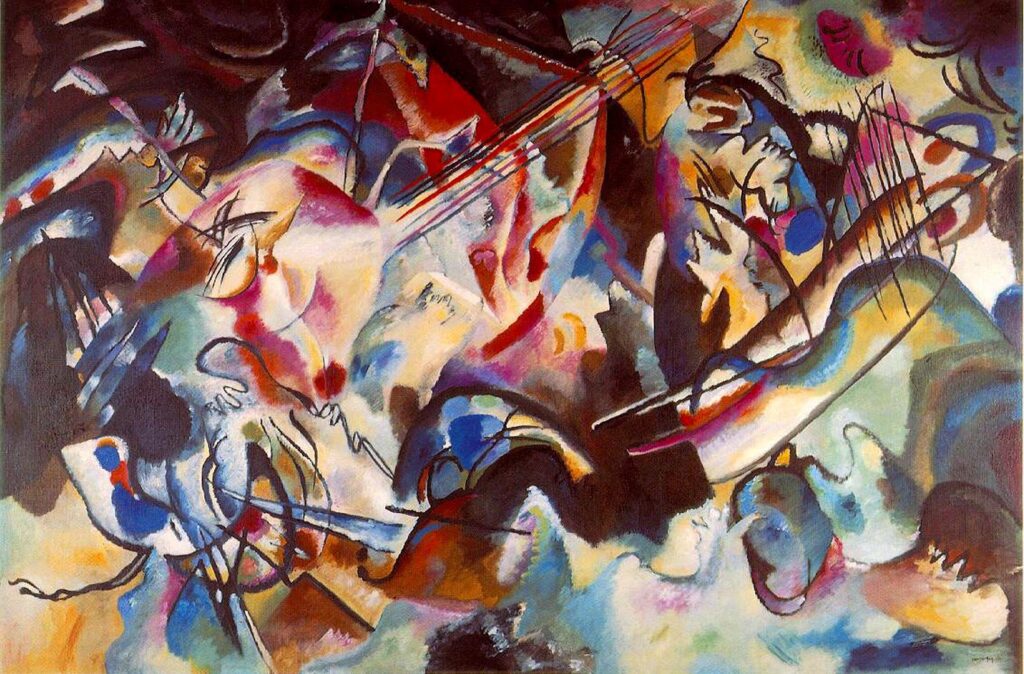
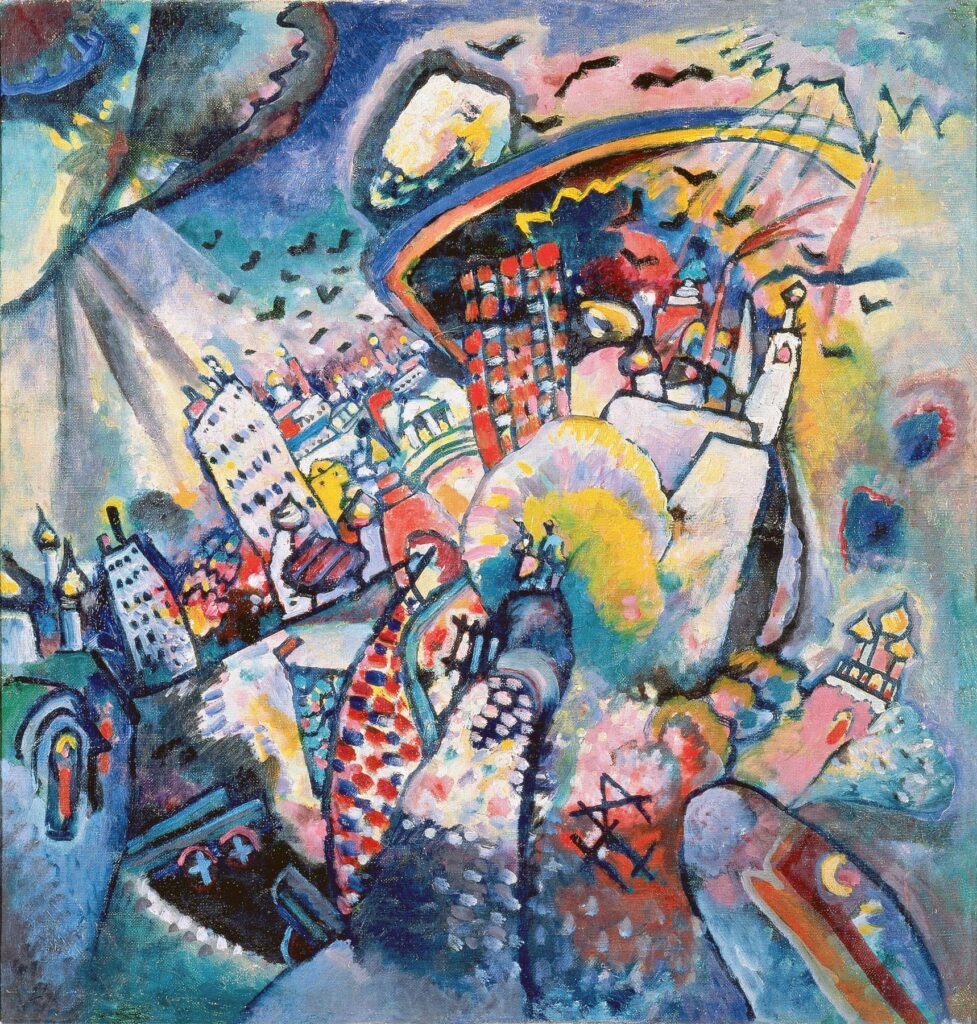
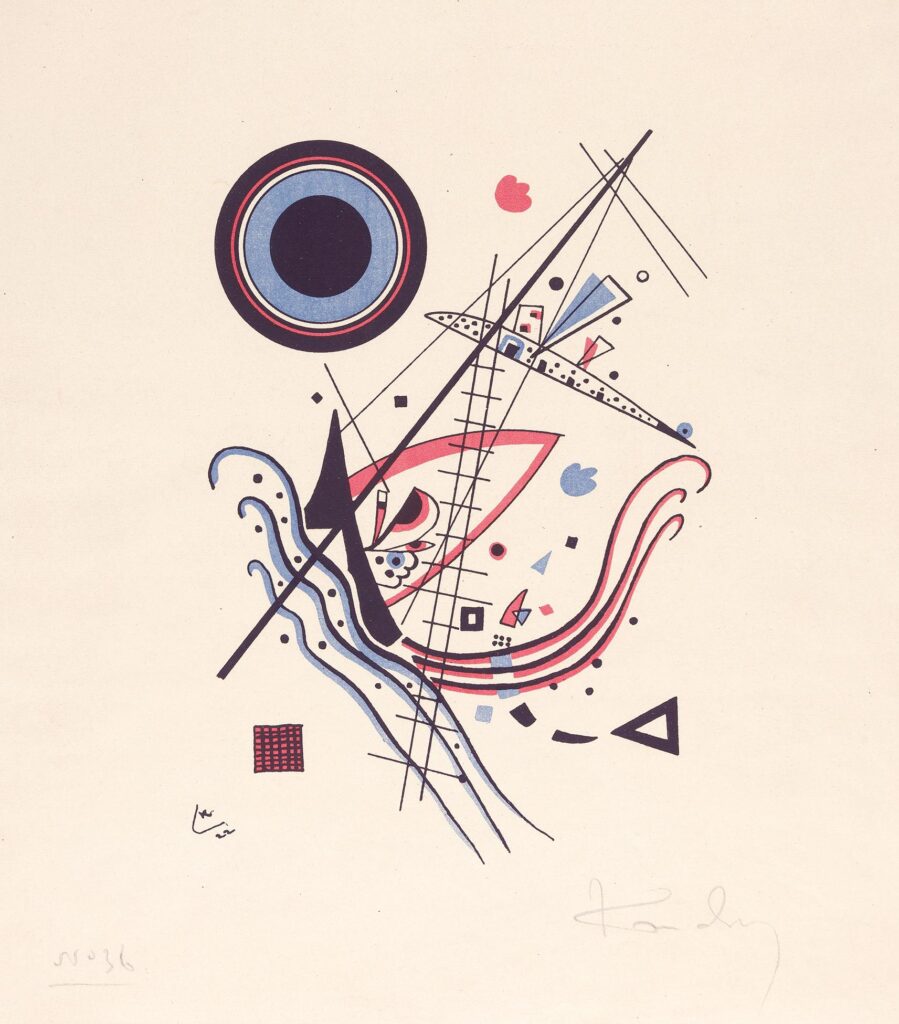


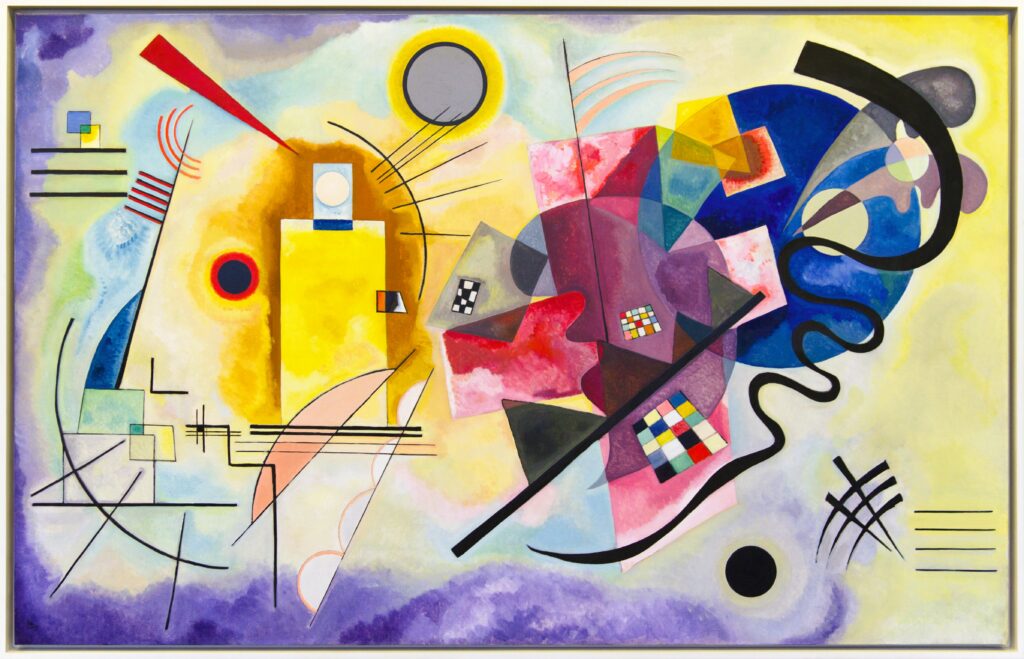



Leave a reply